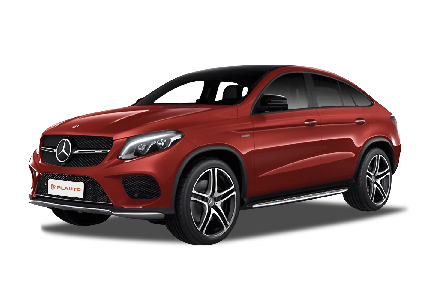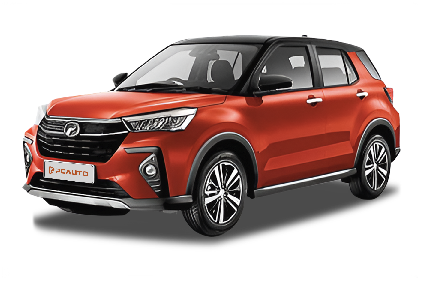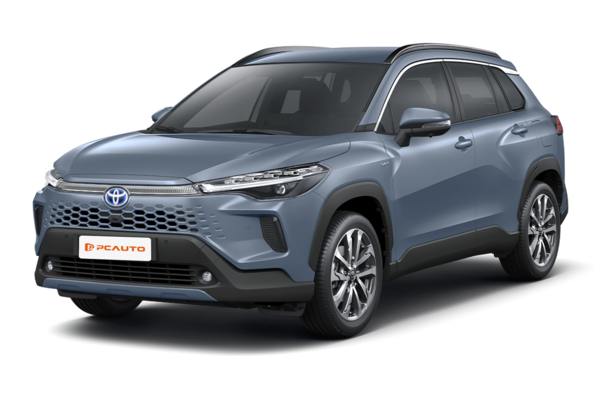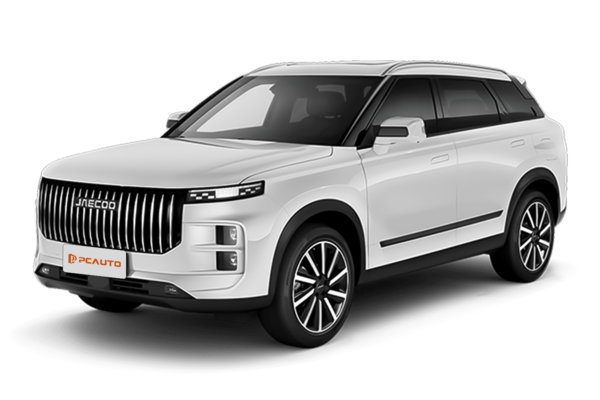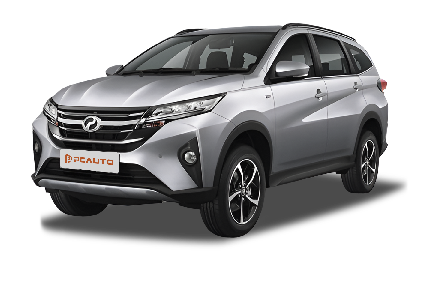Q
What is the lifespan of a Daihatsu Sirion?
As an economical and practical small car, the Daihatsu Sirion is favored by many car owners in the Malaysian market for its durability and low maintenance costs. Its service life typically ranges from 10 to 15 years, depending on the maintenance condition, driving habits, and usage environment. If you regularly replace consumables such as engine oil and filters and strictly follow the manufacturer's recommended maintenance cycle (e.g., once every 5,000 to 10,000 kilometers), the vehicle's engine and transmission system can remain in good condition. The tropical climate in Malaysia may accelerate the aging of rubber parts (such as belts and bushings), so it is recommended to inspect or replace them every 5 years. In addition, the 1.3L and 1.5L engines of the Sirion have mature technologies and sufficient parts supply, resulting in relatively low long-term usage costs. It's worth noting that in the used-car market, Sirion models with complete maintenance records have a relatively high residual value. The models after 2010 offer better comfort due to the improved suspension tuning. For Malaysian consumers with limited budgets who are looking for a reliable means of transportation, this car is worth considering. However, it is advisable to conduct a computer diagnosis before purchasing to ensure there are no hidden faults, and it's better to choose vehicles that have been maintained at the authorized dealership to reduce the risk of subsequent repairs.
Q
What are the advantages of the Toyota Wish?
As a classic 7-seater MPV, the Toyota Wish is highly popular among family users in the Malaysian market. Its advantages mainly lie in practicality and reliability. The spacious and flexible cabin space, combined with the foldable third-row seats, can easily meet the needs of family outings or cargo transportation. The 1.8L and 2.0L Dual VVT-i engines strike a balance between fuel economy and power performance, making them suitable for Malaysia's diverse road conditions.
In addition, Toyota's well-established after-sales service network in the local area and the high resale value of its used cars have also reduced the long-term usage cost. It's worth mentioning that the air - conditioning cooling efficiency of MPV models is particularly important in Malaysia's hot climate, and the Wish's independent rear - row air - conditioning vents are designed with this in mind.
Although there are more new models emerging in the market today, the Wish, with its time - tested durability, remains a practical choice for budget - conscious families. It is especially suitable for users who need to pick up and drop off children frequently or run small businesses.
Q
What engine options are available for the Chery Tiggo 7?
In the Proton Saga, "Gear S" refers to the model's 5-speed automatic transmission with manual mode (also known simply as an automatic gearbox). Co-developed by Proton and renowned Japanese transmission manufacturer Jatco, this gearbox is specifically engineered to pair with the Saga's 1.3L and 1.6L engines. It's designed to deliver smooth shifts and improved fuel efficiency, making it well-suited for both Malaysia's congested city streets and longer highway drives.
The Gear S mode (Sport mode) can be engaged via the gear lever or steering wheel paddle shifters. This holds onto gears longer, letting the engine rev higher to boost acceleration—perfect for overtaking or tackling hilly roads. In contrast, the standard D (Drive) mode prioritizes a comfortable, fuel-efficient ride.
As Malaysia's "national car," the Saga's transmission tuning strikes a balance between durability and local adaptability. For instance, the cooling system is optimized to handle the country's hot and humid climate. It's worth noting that while automatic transmissions with manual mode offer more direct power delivery compared to traditional automatics like CVTs, they can be slightly thirstier. Saga's Gear S technology cleverly balances these traits, letting drivers choose the mode that best fits their style.
If you've got questions about transmission maintenance, stick to Proton's official guidelines—typically an oil change every 40,000 kilometers—and use the factory-recommended fluid to keep things running strong for the long haul.
Q
What Engine is used in Perodua Nexis?
The Perodua Nexis is expected to be equipped with a 1.5-liter Dual VVT-i naturally aspirated engine. This engine shares the technical platform with models like the Perodua Ativa and Toyota Rush. It has a maximum output power of about 106 horsepower and a peak torque of 138 Nm. It is paired with a D-CVT transmission, focusing on fuel economy and smoothness in daily driving. The engine adopts a dual variable valve timing system, which can optimize the intake and exhaust efficiency at both low and high speeds and meets the EURO 4 emission standards in the Malaysian market. For Malaysian users who value practicality, this kind of small-displacement engine can balance the fuel consumption during city commuting and the occasional long-distance needs, and the maintenance cost is relatively low. It's worth mentioning that Perodua has gradually upgraded its power technology in recent years. For example, a more efficient 1.0-liter turbocharged option has been applied to models like the Bezza. In the future, it may also offer a hybrid version for the Nexis to adapt to the market trend, but the specific details shall be subject to the official release. The engine design of this kind of compact SUV usually gives priority to durability in tropical climates. It is recommended that car owners conduct regular maintenance to ensure long-term performance.
Q
What is the real consumption of BYD TANG?
As a plug - in hybrid SUV, the actual fuel consumption of the BYD TANG varies with factors such as driving habits, road conditions, and battery charge. Official data shows that in hybrid mode, the combined fuel consumption is about 1.8 - 2.3L per 100km. In pure - electric mode, the driving range can reach 100 - 120 kilometers, making it suitable for daily short - distance commutes. For users in Malaysia, this low - fuel - consumption performance is especially suitable for congested urban roads, effectively reducing the cost of vehicle use.
If you're taking a long - distance trip, the hybrid system will automatically switch to fuel mode, and the fuel consumption will be close to that of a traditional SUV, approximately 7 - 9L per 100km. It is recommended that car owners make full use of charging facilities to maximize the electric driving range and thus save on fuel costs. At the same time, regular maintenance of the battery and power system can also ensure optimal energy - consumption performance.
In addition, the hot climate in Malaysia may have a slight impact on the battery's driving range. Parking in a shaded area as much as possible helps maintain battery efficiency.
Q
where is vsc button on toyota
On Toyota vehicles, VSC (Vehicle Stability Control) typically doesn’t have a standalone physical button because the system is always on by default. However, some models let you temporarily switch it off using the "TRAC OFF" or "VSC OFF" button, usually located near the center console. The exact spot varies by model—for sedans like the Corolla or Camry, you’ll often find it to the left of the steering wheel or around the gear shifter, while SUVs such as the RAV4 might tuck it next to the drive mode selector. When in doubt, your owner’s manual is the best place to check.
VSC is a cornerstone of Toyota’s safety tech. It uses sensors to monitor how the vehicle’s behaving, and if it detects understeer or oversteer, it’ll automatically tweak engine power and braking to help keep the car stable. This comes in *super* handy on Malaysia’s rain-soaked, slippery roads.
Heads up though—turning VSC off should only be for specific situations, like getting unstuck if you’re bogged down. For everyday driving, leave it on to keep things safe. Toyota’s VSC works alongside the TRAC traction control system, and these kinds of active safety features are pretty much standard in modern cars now. If you’re still unsure how to use it, just hit up your nearest authorized Toyota service center in Malaysia—they’ll sort you out with pro advice.
Q
Is the 2025 Camry a full hybrid?
Yes, the 2025 Toyota Camry offers a Full Hybrid version in the Malaysian market. It is equipped with Toyota's well-established THS II hybrid system. This system combines a 2.5-liter four-cylinder gasoline engine and an electric motor. Through intelligent power distribution, it achieves high-efficiency fuel economy, with the combined fuel consumption as low as 4.1L/100km (the specific data shall be subject to the official announcement in Malaysia). The characteristic of the full-hybrid version is that it doesn't need external charging. The vehicle can automatically maintain the battery charge through brake energy recovery and engine charging. Meanwhile, it supports short-distance driving in pure-electric mode, which is suitable for the congested urban traffic conditions in Malaysia.
In addition, the 2025 Camry has also been upgraded with the new-generation TSS intelligent safety system, including configurations such as pre-collision warning and lane-keeping assist, which enhance driving safety. For Malaysian consumers, the full - hybrid models can not only reduce fuel costs but also enjoy tax incentives from the local government for hybrid vehicles, such as import duty or sales tax exemptions (the specific policies need to refer to the regulations of the current year).
If considering models in the same class, the Honda Accord Hybrid or the Nissan Teana Hybrid are also worthy options for comparison. However, the advantage of Toyota's local assembly (CKD) may result in a more competitive price and better after - sales support.
Q
What is the Perodua Bezza Specs? Here's the Full Specifications
The Perodua Bezza is one of the most popular entry-level sedans in Malaysia. It offers two engine options: a 1.0L and a 1.3L. The 1.0L engine has a maximum power output of 51kW and a peak torque of 91Nm, making it suitable for city commuting. On the other hand, the 1.3L engine provides a higher power of 73kW and a torque of 121Nm, which is ideal for drivers who need more power. Both engines are paired with either a 4-speed automatic or a 5-speed manual transmission and demonstrate excellent fuel economy. Official data shows that the 1.0L model consumes as little as 22.8km/L, while the 1.3L model achieves 21.3km/L.
The Bezza has a body size of 4155mm x 1625mm x 1510mm and a wheelbase of 2455mm, offering spacious seating and a trunk volume of 536L, making it highly practical. In terms of safety features, dual airbags, ABS+EBD, and ISOFIX child seat anchors come as standard across all models. Higher - spec versions are also equipped with an ESC (Electronic Stability Control) system and a reverse radar. The technological features include LED daytime running lights and a touch - screen entertainment system.
The Bezza stands out for its excellent value for money in the Malaysian market, making it a great choice for consumers with a limited budget who still seek reliability and practicality. As a classic model from Perodua, it also has obvious advantages in local design and after - sales service, and has long been among the top - selling cars in Malaysia.
Q
What is the Insurance Price of Ora Good Cat? See How Much Should You Pay
As a popular electric vehicle, the insurance cost of the Ora Good Cat in Malaysia fluctuates based on multiple factors. These typically include the vehicle model, battery capacity (such as 400 Pro or 500 Ultra), type of insurance coverage (comprehensive or third - party insurance), the age of the vehicle owner, driving record, and the area of use.
Taking comprehensive insurance as an example, the first - year premium for a new car is approximately between RM2,500 and RM4,000. The exact amount depends on the quotes from insurance companies. Third - party insurance, on the other hand, may cost as low as around RM1,000.
It's worth noting that electric vehicle insurance may include special provisions for the battery and charging equipment. It is recommended that vehicle owners confirm the scope of coverage before purchasing insurance.
In addition, the Malaysian government provides some tax exemptions to encourage the popularization of electric vehicles, which indirectly reduces the cost of ownership. However, insurance costs are still affected by market risk assessments, such as repair costs or parts supply.
If you want to save on insurance premiums, you can compare the discount schemes of different insurance companies or choose a higher excess. Maintaining a good driving record also helps to reduce long - term costs. Understanding these details can help vehicle owners plan their budgets more wisely and ensure that their vehicles get appropriate coverage.
Q
How to restart the infotainment system of Mazda CX-5?
The common method of restarting the infotainment system of Mazda CX-5 is turning off the vehicle and waiting a few minutes before starting it again. If the infotainment system can't be restarted, you can try pressing and holding the volume control knob or the system power button for about 10 seconds, which may restart the system. However, it should be noted that there might be slight differences depending on the year and configuration of the Mazda CX-5.
